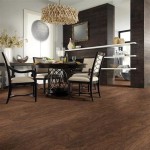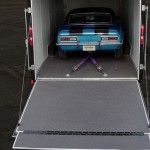Can You Whitewash Hardwood Floors? A Comprehensive Guide
Whitewashing hardwood floors is a popular technique used to lighten and brighten the appearance of wood, creating a rustic, airy, or beachy aesthetic. This process involves applying a diluted paint solution that partially obscures the wood grain while allowing some of the natural character to show through. Whether you are renovating a space or simply looking to update your existing floors, understanding the nuances of whitewashing is crucial for achieving a successful and aesthetically pleasing result.
Though seemingly straightforward, the process of whitewashing hardwood floors demands careful preparation, proper application techniques, and a solid understanding of the materials involved. This article will explore the suitability of different wood types for whitewashing, outline the necessary steps for the procedure, and discuss the potential challenges that homeowners might encounter.
Understanding the Suitability of Different Hardwood Types
Not all hardwood species react the same way to whitewashing. The density, grain pattern, and natural color of the wood will significantly influence the final outcome. Open-grained woods, such as oak or ash, tend to absorb more of the whitewashing solution, resulting in a more pronounced effect. Conversely, denser, close-grained woods like maple or birch may require additional coats to achieve the desired level of opacity.
Oak is a frequently chosen material for whitewashing due to its prominent grain pattern and porous nature. This allows the white pigment to settle into the grain effectively, emphasizing its texture. Similarly, ash provides a desirable rustic quality when whitewashed. On the other hand, hardwoods with tighter grains, while still suitable, may require more effort and careful application to ensure the whitewash adheres evenly and highlights the grain sufficiently.
The existing color of the hardwood also needs consideration. Darker hardwoods, such as walnut or mahogany, will necessitate more coats of whitewash to achieve a noticeable lightening effect. In some cases, it may be necessary to sand these darker woods more aggressively to remove existing stains or finishes and provide a lighter base for the whitewash to adhere to.
Ultimately, testing the whitewashing technique on a small, inconspicuous area of the floor is highly recommended. This allows you to observe how the specific wood type reacts to the chosen whitewash solution and adjust the application accordingly. Consider the existing stains, coating, and wood grade of the materials before proceeding.
Step-by-Step Guide to Whitewashing Hardwood Floors
The process of whitewashing hardwood floors comprises several critical stages: preparation, application, and finishing. Each stage requires specific tools, materials, and techniques to ensure a professional and long-lasting result.
Preparation: Thorough preparation is arguably the most important step in the whitewashing process. This involves cleaning the floor, sanding it down to a smooth, even surface, and removing any dust or debris. Start by sweeping or vacuuming the floor to eliminate loose dirt and particles. Next, use a wood floor cleaner to remove any grease, grime, or existing wax buildup.
Sanding is crucial for creating a receptive surface for the whitewash solution. Use a floor sander with progressively finer grits of sandpaper. Start with a coarser grit (e.g., 60-grit) to remove existing finishes and imperfections. Then, move to a medium grit (e.g., 80-grit) to further smooth the surface. Finally, use a fine grit (e.g., 120-grit) to create a polished, even base. Ensure even sanding across the entire floor surface, paying particular attention to edges and corners.
After sanding, meticulously remove all dust using a vacuum cleaner with a soft brush attachment. Follow this with a tack cloth to pick up any remaining fine particles. A clean surface is essential for the whitewash to adhere properly and prevent imperfections in the final finish. Properly ventilate the workspace before, during, and after the completion of the washing or treatment.
Application: The application of the whitewash solution requires careful attention to detail to achieve the desired effect. The most common whitewashing solutions consist of diluted latex paint or specialized whitewashing stains. The dilution ratio depends on the desired level of opacity; a ratio of 1:1 (paint to water) is a common starting point, but this can be adjusted to achieve a lighter or more opaque finish. Always test the solution on a hidden area of the floor before applying it to the entire surface.
Apply the whitewash solution evenly using a paint brush, roller or rag. Work in small sections, following the direction of the wood grain. If using a brush, apply the whitewash in long, even strokes. If using a roller, avoid applying too much pressure, which can result in an uneven finish. Immediately after applying the whitewash, use a clean, lint-free cloth to wipe off the excess. This step is crucial for allowing the wood grain to show through and preventing the finish from becoming overly opaque.
The number of coats required depends on the desired level of opacity and the type of wood. Allow each coat to dry completely before applying the next. Lightly sand between coats with a fine-grit sandpaper (e.g., 220-grit) to ensure a smooth, even surface.
Finishing: Once the whitewash has dried completely, apply a protective topcoat to seal and protect the floor from wear and tear. Polyurethane is a popular choice for hardwood floors due to its durability and water resistance. Apply two to three coats of polyurethane, allowing each coat to dry completely before applying the next. Lightly sand between coats to ensure a smooth, even finish.
Water-based polyurethane is often preferred for whitewashed floors as it is less likely to yellow over time compared to oil-based polyurethane. This helps to preserve the light, airy aesthetic of the whitewashed finish. Apply the topcoat evenly using a brush or roller, following the manufacturer's instructions.
Potential Challenges and Troubleshooting
Whitewashing hardwood floors, while a relatively simple technique, can present several challenges. Addressing these potential issues proactively can help ensure a successful outcome.
Uneven Application: Uneven application of the whitewash solution can result in a patchy or inconsistent finish. This can be caused by using too much or too little solution, applying uneven pressure, or failing to wipe off the excess effectively. One way to reduce risks is to apply the solution in thin, even coats, working in small sections. Regularly check the finish as you work and address any uneven areas immediately. If necessary, lightly sand the affected areas and reapply the whitewash solution.
Grain Raising: Applying a water-based whitewash solution can cause the wood grain to raise. This can result in a rough or uneven surface. To minimize grain raising, lightly dampen the floor with water before sanding. This will raise the grain, which can then be sanded down to create a smooth surface. Alternatively, use a sanding sealer before applying the whitewash to help prevent grain raising.
Yellowing: Some finishes and topcoats can yellow over time, which can alter the appearance of the whitewashed floor. Oil-based polyurethane, in particular, is prone to yellowing. To avoid this, use a water-based polyurethane or a specialized non-yellowing finish. Regularly clean the floors with a pH-neutral cleaner to help maintain the color and prevent discoloration.
Adhesion Problems: In some cases, the whitewash solution may not adhere properly to the floor. This can be caused by a dirty or improperly prepared surface. Ensure that the floor is thoroughly cleaned and sanded before applying the whitewash. If adhesion problems persist, consider using a primer specifically designed for hardwood floors before applying the whitewash.
Choosing the Right Products: Selecting suitable products is critical to the success of the project. Carefully consider the characteristics of the wood, the desired level of opacity, and the type of topcoat. Always test the products on a hidden area of the floor to ensure compatibility and achieve the desired aesthetic.
Engaging in a comprehensive approach to preparation, application, and problem-solving will increase the likelihood of achieving a professionally whitewashed hardwood floor. Understanding the properties of various hardwood species, following detailed step-by-step instructions, and addressing potential challenges will contribute significantly to a successful outcome.

Wood Floor Refinishing And Whitewashing The Honeycomb Home

Sanding And Whitewashing Wood Floors

Diy Whitewashed Wood Floors Renovation Semi Pros
:strip_icc()/10194750920whitewash20floors20step202-99eae86a2dd746d9b89b35a639a0973a.jpg?strip=all)
How To Whitewash Hardwood Flooring For A Fresher Aesthetic

Whitewash Hardwood Floors Wood Flooring La

Trendy Whitewashed Hardwood Floors

Diy Whitewashed Wood Floors Renovation Semi Pros

Nostalgiecat How To Whitewash Wooden Flooring

How To Whitewash Hardwood Floors The Right Way Flooring Girl

Studio Hardwood Flooring Stained Or Whitewashed Addicted 2 Decorating
Related Posts








